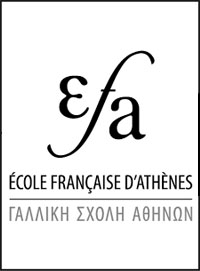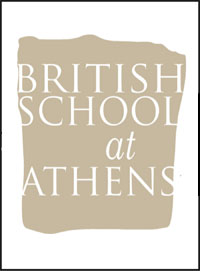Hellanion Oros, Aigina - 2023
Informations Générales
Numéro de la notice
19633
Année de l'opération
2023
Chronologie
Mots-clés
Nature de l'opération
Institution(s)
Εφορεία Αρχαιοτήτων Πειραιώς και Νήσων (Éphorie des antiquités du Pirée et des îles)
École suisse d'archéologie en Grèce (ESAG) (École suisse d'archéologie en Grèce)
Localisation
Toponyme
Égine, Aigina, Aegina (island)
Égine, Aigina, Aegina (island)
Notices et opérations liées
2023
Description
Aigina - Hellanion Oros. Stella Chrysoulaki (Ephorate of Antiquities of Piraeus and islands) and Tobias Krapf (ESAG) report on third season of a five-year project on Hellanion Oros in Aigina, a synergasia between the Ephorate of Antiquities of Piraeus and islands and ESAG.
In 2023, excavations concentrated on the area north of the small church, an area with well-preserved structures and deposits, dated in the second half of the 2nd millenium BC. There a trial trench revealed a 4,5x3m space, surrounded by three walls (dated to the Mycenaean period) and a rock, as well as a destruction layer with intact ceramic vessels. At least 30 object were buried there during destruction, mostly used for storage and coocking. Some drinking vessels were also found, as well as spindle whorls and a stone bowl (Fig. 1). The ceramics have been dated to the LH IIIB2 and LH IIIC periods, which indicates that the site could have been used as a place of refuge during this transitional period of the Late Bronze Age. Evidence for earlier occupation in the area includes Middle Bronze Age ceramics found underneath the later Mycenaean structures, as well as south of the modern church.
In 2023, excavations concentrated on the area north of the small church, an area with well-preserved structures and deposits, dated in the second half of the 2nd millenium BC. There a trial trench revealed a 4,5x3m space, surrounded by three walls (dated to the Mycenaean period) and a rock, as well as a destruction layer with intact ceramic vessels. At least 30 object were buried there during destruction, mostly used for storage and coocking. Some drinking vessels were also found, as well as spindle whorls and a stone bowl (Fig. 1). The ceramics have been dated to the LH IIIB2 and LH IIIC periods, which indicates that the site could have been used as a place of refuge during this transitional period of the Late Bronze Age. Evidence for earlier occupation in the area includes Middle Bronze Age ceramics found underneath the later Mycenaean structures, as well as south of the modern church.
Auteur de la notice
Georgios Mouratidis
Références bibliographiques
Annual Report of ESAG 2023
Légende graphique :
![]() localisation de la fouille/de l'opération
localisation de la fouille/de l'opération
![]() localisation du toponyme
localisation du toponyme
![]() polygone du toponyme Chronique
polygone du toponyme Chronique
Fonctionnalités de la carte :
![]() sélectionner un autre fond de plan
sélectionner un autre fond de plan
![]() se rapprocher ou s'éloigner de la zone
se rapprocher ou s'éloigner de la zone
![]() afficher la carte en plein écran
afficher la carte en plein écran
Date de création
2024-09-12 13:16:27
Dernière modification
2025-12-01 10:00:24








